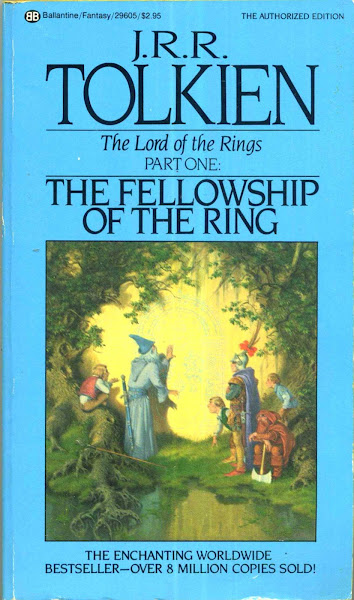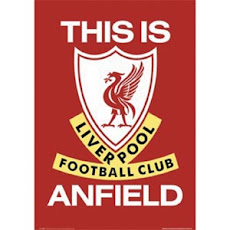
http://www.ateneo.edu/index.php?p=120&type=2&sec=40&aid=6580
I re-wrote A Masterstroke to include lots more research and interesting data that was previously not available to me. I suggest you re-read the whole piece because it is now totally different. Also read my comments in the notes section.
- for Fr. William F. Masterson S.J. who dared and dreamed -
 Sudden Impact
Sudden ImpactWhen Fr. William F. Masterson S.J. was a Jesuit novice who taught in the Ateneo de Manila grade and high school, he was one of the more popular teachers around.
Not soon after he returned as a newly-ordained priest from the United States after World War II ended, Fr. Bill, now the new Rector; saw his popularity ratings dip to rock bottom. The 20th Rector in the 88-year history of the Ateneo was about to make one of the most controversial decisions in the school’s history.
The trip from the dockyards of Baltimore on board the converted liner the Gertrude Maersk took him all the way through the Panama Canal to the Far East. After more than a month at sea, the good priest arrived at Manila Bay on the 13th of August, 1947.
The Philippines was barely a year as a full-fledged Republic after gaining its independence from America. The Pacific War had ended two years earlier yet the country still wasn’t done repairing the war damages.
Rev. Fr. Francis X. Reardon S.J., the outgoing Rector, met him at the docks along with some other officials and immediately went straight to the Ateneo in Padre Faura. The school returned to its familiar ground after a year in Plaza Guipit in Sampaloc.
Life Among the Ruins
The school and the Society of Jesus faced massive problems. The campus with its majestic edifices and buildings lay in ruins. Due to the lack of facilities, many of its students had transferred to nearby schools. The Jesuit faculty was severely depleted because of the war. Some died during their internment in Los Baños during the war while those who survived were weary and sick if not malnourished.
Nevertheless, Fr. Reardon reopened the school yet operated it at a staggering Php 100,000 loss in 1947 alone.
Back stateside, Fr. Masterson had worked and coordinated with General Douglas MacArthur in setting up a relief program for the Philippines through donations. If there was one thing he learned from the American Caesar, it was looking ahead and expanding one’s territory.
With the Pacific War close to an end, Fr. Masterson was named Director for the Jesuit Philippine Bureau in New York that was responsible for raising aid for the Society’s institutions in the Far East. He managed to raise $4 million and used half the amount to provide relief for the displaced and starving children all over the Philippine archipelago.
When he arrived in the Philippines, he took Fr. John McCarron, S.J. into his confidence and unveiled his master plan. They set about doing a study on selling the Society’s scattered properties throughout Manila and its environs and consolidating them in one area – one that could accommodate all the units and more.
It was Fr. Austin Dowd who was responsible for getting the schooling back on track in those Quonset huts that served as classrooms in Padre Faura that the students dubbed as “Ateneo de Quonset" (a few classes were also held at the Nazaret House in Plaza Guipit). But it was Fr. John who always found the occasion to build things and was thereby known as the “Great Stone Mason.”
The war had left him with a slight limp but he remained a tough teacher not to mention competitor. He previously introduced boxing as an intramural sport and once taught a student the sweet science’s rudiments by knocking him out some. The task of planning and canvassing suited Fr. McCarron to a “T.”

The Master Plan
Fathers Bill and John looked at several locations but the one place they instantly fell in love with was the Balara area overlooking the Marikina Valley. Coincidentally, the University of the Philippines was contemplating a similar move and in the same area.
During one exploration trip to Balara with some students, Fr. Masterson raised his arms and declared, “On this location the new Ateneo will rise.”
Everyone thought it to be a joke but within a few weeks, a feasibility study was completed and it confirmed the seriousness of the Rector’s plans.
The decision to move the Ateneo to a new location was contingent on three things: 1) that the site be that sprawling hilltop in Balara, 2) begin work on a gym that will be a source of revenue, and 3) to sell Jesuit properties in Manila.
Fr. Masterson was crucified.
The announcement was met with protest by the faculty, the student body and their parents, alumni not to mention his fellow Jesuits. The school catered to the genteel and the insulares who all lived nearby. Its proximity to Malacañang, Luneta, and those stomping grounds of Taft was perfect. A move to Balara which was a howling wilderness meant that the school would drift from the center of the galaxy that was Manila. Many openly wondered if the school would lose its market and if they were going to open their doors to monkeys and wild animals given how Balara was underdeveloped.
“Who wants to go to school in the province with the carabaos?” asked an angry student base.
The concern wasn’t as simple as relocation. Many families sent their sons to Ateneo and their daughters to either Assumption or the Malabon Normal School that was run by the Maryknoll Sisters. The move was certain to cause havoc in the students’ commute since there was hardly any public transportation that made the outskirts of Quezon City as part of its route.
Fr. Masterson argued that the construction of the gym would help in the funding of the rebirth of the Ateneo. He theorized that if the school can play at least 20 games a year in the new state of the art gym, they could earn up to Php 120,000 annually.
Since he was the Rector, he had the final say on many things. Yet due to a confluence of events, the move seemed that it would stall from the lack of funds needed to purchase the land from the government.
In Fr. Bill's report to the War Damage Commission, it was declared that the total cost of rebuilding the school would amount to Php 1,500,000. The US Congress passed Bill S-1033 that provided all American-governed educational and public welfare institutions would be paid the cost of their original construction. “If that Bill becomes law,” presented the Rector. “We will not have a (financial) problem.”
Except with the entire country ravaged there wasn’t enough money to go around.
The Society of Jesus was paid only Php 400,000 but Fr. Masterson remained undaunted. He had faced similar cash flow problems while helping out with the war effort in New York. He was sure that he would be able to find the money.
The problems, however, persisted. The newly-erected chapel in Padre Faura burned down because of faulty wiring, setting back the Jesuits by another Php 3,000.
A drive where items and artifacts were sold netted Php 70,000 in the bank. They sold the original school grounds in Intramuros for Php 400,000 and a property in Balintawak for Php 250,000. There were buyers for the Padre Faura campus except that they could not sell it just yet because they had nowhere to move to.
The land that would be known as Loyola Heights cost Php 420,000. But the gym cost more at Php 650,000.
The school was left with Php 50,000 as operational expenses. It was a gamble; one fraught with so much risk and danger. Fr. Masterson prayed long and hard for guidance and perseverance.
The gym was designed to accommodate 7,500 paying patrons divided into box seats, reserved seats, and the bleachers. With a total area of 60, 863 sq. ft., not only would it feature a basketball court but also the Athletics Office, the ROTC Office and Armory, the printing shop, the electrical and carpentry shop, locker rooms with showers, six bowling alleys, a billiard room, a press room, and four snack bars.
It took a year to finish the huge gym and right before its completion in December of 1949, in order to generate more funds, Fr. Masterson booked the 19th Alumni Homecoming right before Christmas and a concert featuring the noted pianist Ben Tupas and the Manila Symphonic Orchestra in January the following year.

If there was anything that life during wartime taught Fr. Bill, it was resourcefulness. Fr. Masterson found a tremendous amount of support from stateside allies that included New York City Mayor William O’Dwyer, Francis Cardinal Spellman, the sixth Archbishop of the Catholic Diocese of New York, former U.S. Postmaster General James Farley, and the then-President of the United States, Harry S. Truman.
The gracious Ateneo Rector offered all of them honorary alumnus status; a gesture that so moved President Truman that in an official White House stationary letter dated June 9, 1947, he wrote Fr. Masterson: “I consider it a great honor and privilege to be made an honorary member of the foremost Jesuit educational institution in the Far East. I hope you will continue your work in building a greater citadel of education in the Philippines.”
In an aerial photograph taken of the school grounds on March 9, 1952, the full 150 hectares had been cleared of trees, wild grass, and other natural formations. The photograph depicted in stunning clarity the Ateneo Gym, the Grade School that had two buildings, the high school which then comprised of the present-day Xavier, Kostka, Berchmans, and Gonzaga Halls, Bellarmine Hall where the college was situated, the Jesuit Residence, and the college covered courts.
There were four exits that led to the old Balara Road that would be renamed Katipunan Avenue about a decade later. Three of them form the present-day Gates 1, 2, and 3 but there was actually another driveway between Gates 2 and 3 that cut across the area where the football fields are now.
The photograph showed a sparsely populated area. The cogon grass and hilly area had been bulldozed flat. But mysteriously, only one tree inside the campus was left standing and it still stands as it currently fronts the left side of the Ricardo Leong Center for Chinese Studies.
Below the Marikina Valley, there was nothing save for an unspoiled Marikina River and few houses. In order to clear the entire area, it would take sophisticated construction equipment of the time, a truckload of money, plus some favors from high places.
Fr. Masterson managed to solve that with the monies made from the sale of the Jesuit properties in Manila as well as the donations from America. In response to the concerns of the daughters of Ateneo families, Fr. Bill traveled to the Maryknoll Sisters Mother House in New York and persuaded them to transfer their school next to the site of the new Ateneo.
With pledges and advance payments coming in, the Jesuits even with the gym unfinished expanded the construction to include the grade and high school buildings.
Spread Wide Each Wing
On December 3, 1949, the Ateneo Gym, as the cavernous facility was simply named, was going to be inaugurated.
It had rained non-stop the previous 10 days and it left the bulldozed parking lot surrounding the gym a quagmire that resembled a muddy battlefield. Miraculously, in the morning of December 3, 1949 – a Saturday – the rains stopped yet the skies were overcast.
Despite the inclement weather, the traffic from Manila streamed right into the car traps as 6,000 people flocked to the gym.
The Archbishop of Manila Reverend Gabriel Reyes was the guest of honor and he blessed the new facility by tossing Holy Water at the front of the gym all the way around the court.
A beaming Fr. Masterson gave a rousing speech at center court before he turned the microphone over to Atty. Ambrosio Padilla who led the basketball team to an NCAA title before the war. The Secretary of Education Dr. Manuel Carreon talked about the Ateneo’s significance in educating the modern Filipino youth as they struggled to bring back a country to her feet. He too, kept things brief before turning over center stage to the last speaker.
And he was the team captain for the Blue Eagles, Luis “Moro” Lorenzo.
As the captain smilingly trooped to the podium, Fr. Masterson and Atty. Padilla conferred him with a special award – Ateneo’s Most Outstanding Player of the Year as an appreciative audience showered him with applause. Lorenzo had led the luckless Blue Eagles time and again on the hardcourt giving new meaning to "One Big Fight!" His scoring feats at that were unheard of. He routinely scored in the 20's and 30's hitherto unchartered territory for many a player. And he was the man who gave Ateneo a chance to win day and day out.
As Lorenzo stood before the microphone, a hush descended on the crowd. Such was the respect for Lorenzo that he literally held the crowd in sway.
“We have a new gym,” he enunciated in a deliberate tone before pausing for effect. “But this will not mean anything without the spirit that is found in the bleachers… and the members of the teams that will play on the court.”
And the crowd went wild.
The first team ever to take the court of the gym were two Ateneo junior squads: one from Manila and the other from Davao who were known as the Knights.
The Blue Eaglets beat the Davaoeños 46-40 behind the exploits of Rusty Cacho, Johnny Chiudan, Ignacio Ramos and Vicente Santos. The visitors kept the game close by its two stalwarts who would figure prominently against Ateneo later on – Bonny Carbonell and Lito Banggoy. One player did not get off the Knights’ bench that game… one Sonny Paguia who would later coach National University in the UAAP.
Then came the main event… the Ateneo Blue Eagles and the defending NCAA Champion the Mapua Cardinals.
Ateneo was bannered by Lorenzo who prior to this friendly match torched the champions for 34 points. Starting alongside him were Chole Gaston, Poch Estella, Pepot Gonzales, and Luis La O. The Blue Eagles were coached by former player Rafael Roco.
The game featured several lead changes but at the end of it, the Cardinals survived 58-56 largely due to the hot shooting of Valerio Lopez.
As the final whistle sounded, the beaten Blue Eagles shook hands with the victorious Cardinals. Then both squads faced the crowd and bowed.
A new chapter began in Ateneo history but it would have to make it without Fr. Masterson.
In May of 1950, he was fired from his position as Rector and exiled to Ateneo de Cagayan where he was designated as Student Counselor and Head of the English Department.
Redemption
Fr. William F. Masterson completed the work he set out to do in 1950 – to move the Ateneo to a new home where it could grow away from the crowded confines of Manila. He moved to Cagayan where he was faced with the daunting task of putting up Ateneo de Cagayan or Xavier University.
The 21st Ateneo Rector, Reverend Fr. James McMahon S.J., completed the transfer of all the units by 1952 save for the College of Law and the Graduate School (that Fr. Bill also started) which both stayed behind in Padre Faura.
Fr. Bill astonished his critics by putting up a College of Agriculture, a precursor to the internationally-acclaimed South East Asia Rural Leadership Institute whose graduates initiated agriculture-based programs in 22 countries. Said Fr. Masterson, “I felt that we had no right to exist unless we immersed ourselves in the problems of our milieu.”
In 1967, the Ateneo de Manila made amends for the injustice done to Fr. Bill. He was awarded an Honorary Degree of Doctor of Humane Letters honoris causa.
Seven years later on August 31, 1974, Fr. Masterson received another important award, the Ramon Magsaysay Award for International Understanding.
He would receive several more awards including the Xavier Medal, the highest honor bestowed by the Society of Jesus on its members.
Years after that, the University named the main campus road Fr. Masterson Drive.
Notes: The land purchased by Fr. Masterson included not only the present-day Ateneo de Manila but also the area of Miriam College and a portion of La Vista and Alta Vista.
On the land that would come to be known as Xavierville that was owned by the Ramos family, there was a plan to put up some housing for the Ateneo faculty and staff. Instead the housing was relocated to a street in a subdivision Town & Country in the suburb of Cainta. The road is called Ateneo Road. Meanwhile, the Ramos family settled into the Alta Vista area while Xavierville was eventually developed into a residential area.
Almost immediately after the move to Balara, Fr. Masterson re-christened the area “Loyola Heights.” The Jesuit Residence was called “the Loyola House.” That name was discontinued when the Ateneo Gym was called Loyola Center and the Loyola House of Studies was put up.
My Comments: The time of Ateneo's move to Loyola Heights was difficult. At the time of the move in 1949, much of the area was still not fixed. To get there, one needed a car or a chartered bus.
Walking from the campus to the corner of what would be eventually Aurora Boulevard seemed far. The sun didn't sear one's skin the way it does today but it did cause concerns because there wasn't any police department or hospital nearby.
The move taxed resources early on and it frayed many nerves. But after a few years, all was well. Fr. Masterson was proven right in moving. If you look at the U-Belt schools, they are trying to gobble up all the nearby buildings and properties in such a convoluted area.
Walking from the campus to the corner of what would be eventually Aurora Boulevard seemed far. The sun didn't sear one's skin the way it does today but it did cause concerns because there wasn't any police department or hospital nearby.
The move taxed resources early on and it frayed many nerves. But after a few years, all was well. Fr. Masterson was proven right in moving. If you look at the U-Belt schools, they are trying to gobble up all the nearby buildings and properties in such a convoluted area.
Since we're on the topic of history, I say that we should restore the San Ignacio Church in Intramuros. I downplayed the criticism that Fr. Masterson received. It was bad. But in the end he was right while all those idiots were dead wrong. It was the same thing when people were keeping women from entering Ateneo (I am a firm believer in women's rights). There are always people who oppose yet they do not even give money at all to the cause. Even the medical school took so long. Remember it is not the men who say no who change the world. They are merely blood-sucking parasites who live off the bravery and imagination of others. Screw them bastards.
This coming December will be the 60th Anniversary of the Ateneo Gym, Loyola Center, or Blue Eagle Gym.
I worked on Making A World of Difference for Ateneo several years ago through the office of Dr. Angeles. It was executive produced by OIP with Glenn De Leon and Joanna Ruiz through the VP's Office. I wrote and directed it with a lot of help from Mai Ventura. Erwin Nolido provided his equipment and production house. Ceres Lina and Trina Alejo were our production assistants.
The video was used for attracting foreign students to go to Ateneo. Glenn informed me as of today, Wednesday, March 18 that it is all over the world in universities and colleges. Wow! But disclaimer. This video was not responsible for the recruitment of Kirk Long and Vince Burke. Bwahahaha.
We totally had fun doing this although we had sleepless nights. It was a great and rewarding experience.
The video was used for attracting foreign students to go to Ateneo. Glenn informed me as of today, Wednesday, March 18 that it is all over the world in universities and colleges. Wow! But disclaimer. This video was not responsible for the recruitment of Kirk Long and Vince Burke. Bwahahaha.
We totally had fun doing this although we had sleepless nights. It was a great and rewarding experience.









No comments:
Post a Comment